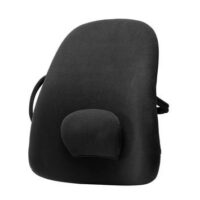Teenager Back Pain
Managing Teenager Back Pain: A Physiotherapist’s Guide

Why Does Teenager Back Pain Occur?
Teenagers often experience spinal discomfort due to their unique physiological traits. Their abundant flexibility, combined with lower muscle strength and poor posture control, makes them more susceptible to back and neck pain. This issue can impact their daily activities and overall quality of life, highlighting the need for effective management strategies.
How to Address Teenager Back Pain?
Encourage Regular Exercise
Regular exercise plays a crucial role in preventing spinal pain in youth. Focusing on maintaining fitness and core stability is essential. Engaging in routine physical activity helps strengthen supporting muscles and reduces the risk of spine injuries. However, some sports like gymnastics, cricket fast bowling, and tennis increase the likelihood of lumbar spine issues due to repetitive twisting and hyper-bending motions. Appropriate exercise and load-management programs can significantly minimise these risks.
Who Should Seek Professional Guidance?
Severe conditions such as spondylolisthesis require careful treatment from a skilled physiotherapist. Fortunately, most injuries are minor, self-limiting, and respond well to physiotherapy intervention. If your teenager experiences spinal discomfort, it is highly recommended to consult a physiotherapist or spinal specialist to identify and address any deficiencies.
Where to Get Help?
Consulting a physiotherapist is crucial for managing teenager back pain. Equipped with the right treatment and guidance, adolescents can effectively manage their spinal pain and maintain an active and healthy lifestyle. Physiotherapists can provide tailored exercise programs and ergonomic advice to address the specific needs of teenagers.
When to Seek Treatment?
Early intervention is key. Recent research highlights the importance of addressing adolescent spinal pain promptly. Delaying treatment can lead to chronic issues and more significant discomfort. It’s important to seek professional advice as soon as your teenager reports back pain to ensure effective management.
What Are Preventive Measures?
Implementing preventive strategies can significantly reduce the incidence of adolescent neck and back pain. Encourage teenagers to adopt ergonomic practices, maintain proper posture during activities, and limit sedentary behaviours. Here are some ergonomic tips:
- Proper Desk and Chair Height: Ensure desks and chairs support a neutral spine alignment during study sessions. Read: How to Set Up Your Workspace.
- Regular Breaks: Encourage stretching and mobilising stiff muscles, especially during prolonged sitting or screen use.
- Good Posture: Emphasise maintaining good posture while standing, walking, and during recreational activities. Read more: How to Improve Your Posture.
- Safe Lifting Techniques: Provide guidance on lifting techniques to prevent excessive strain on the spine during daily tasks and sports.
New Research on Teenager Back Pain
Recent studies underscore the pivotal role of early intervention and tailored physiotherapy programs in improving adolescent spinal pain. A multidimensional approach, including strength training, postural correction, and ergonomic modifications, can alleviate discomfort and enhance functional outcomes. Calavo-Munoz et al (2013), Minghell et al (2021).
Conclusion
Understanding and proactively addressing adolescent neck and back pain is crucial for fostering optimal musculoskeletal health among teenagers. Regular exercise, professional guidance, and evidence-based interventions can help mitigate spinal discomfort, allowing adolescents to lead pain-free lives.
What to Do?
To seek professional advice and start alleviating adolescent neck and back pain, consult your physiotherapist today.
Read more:














































































